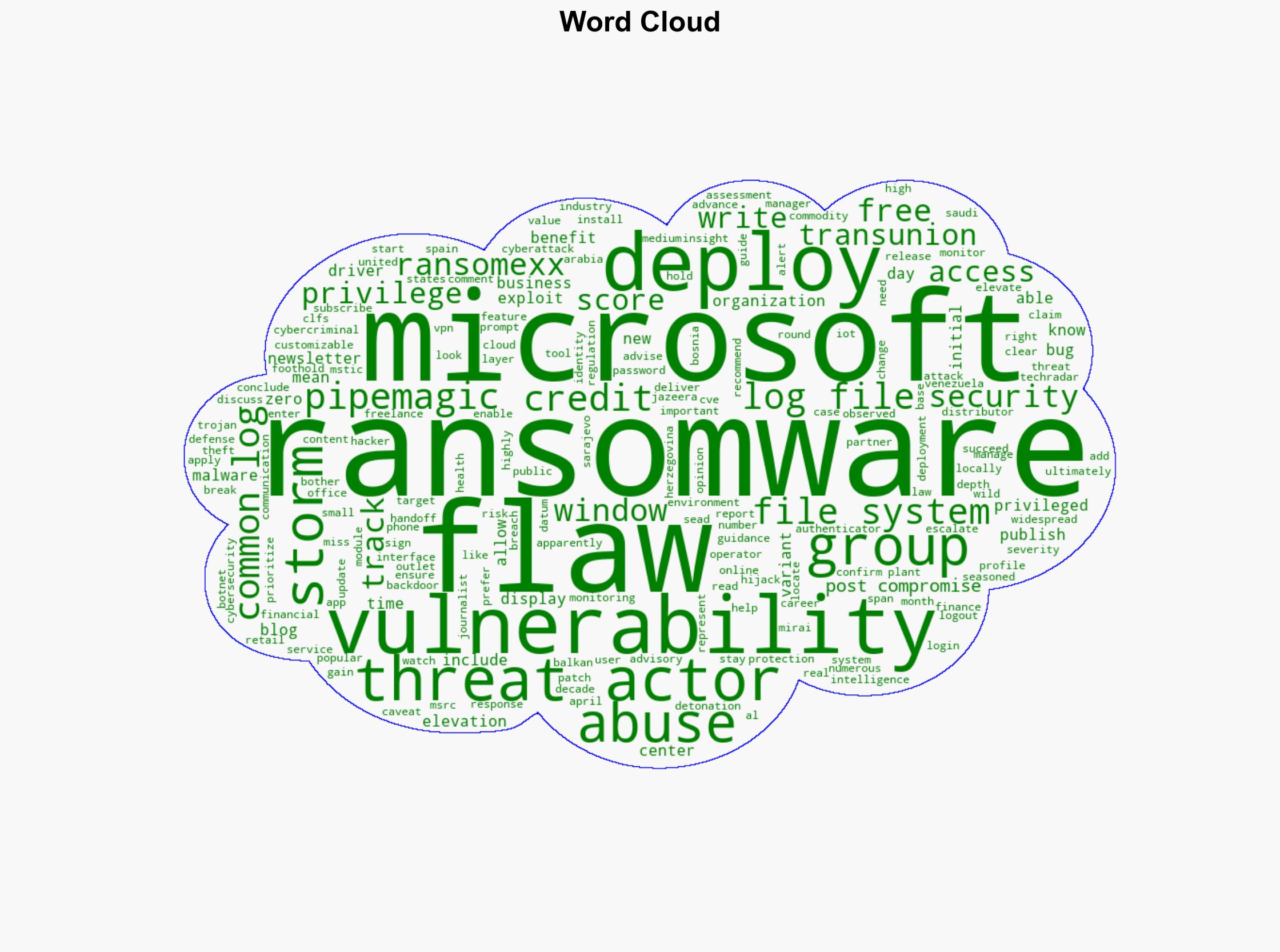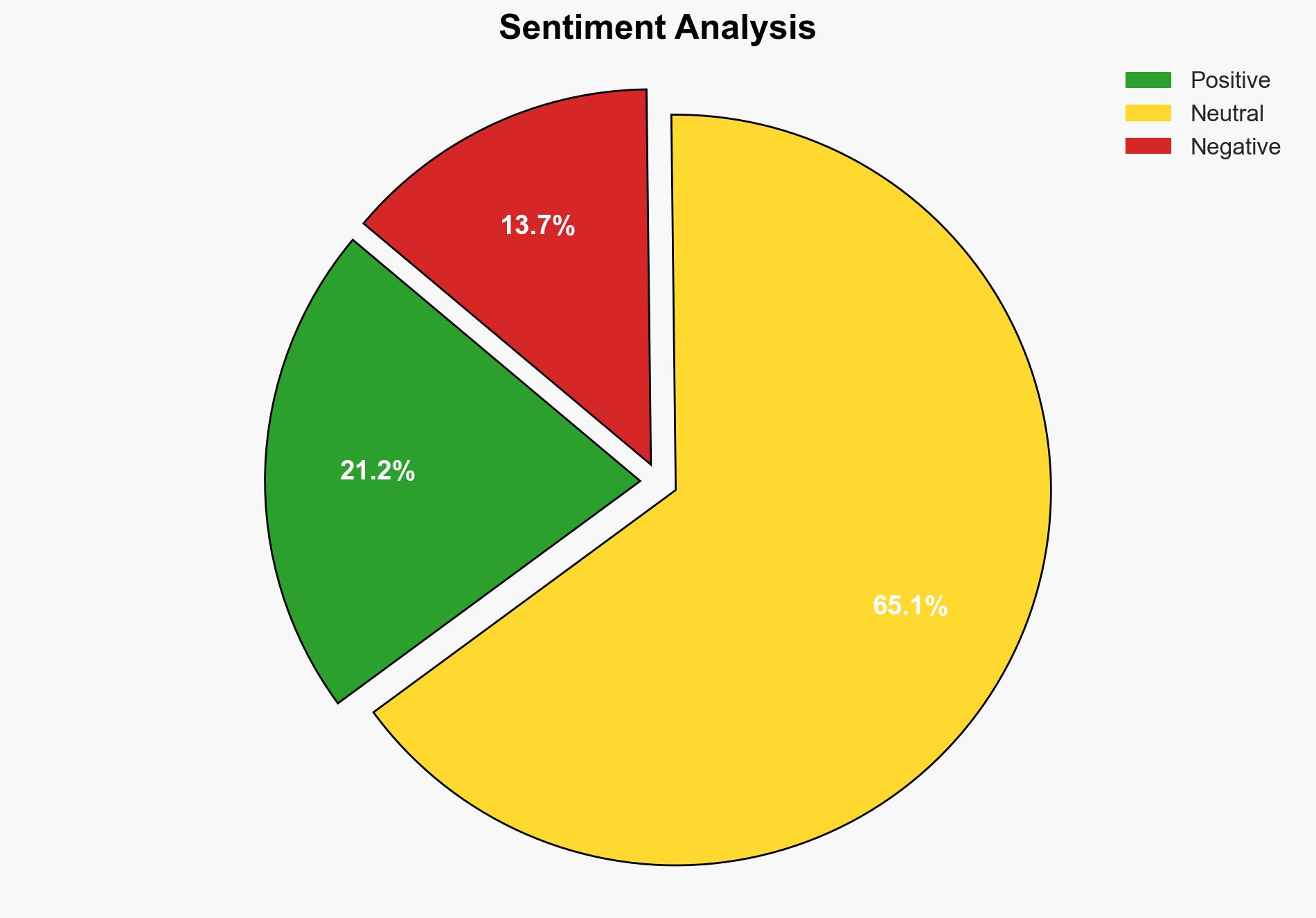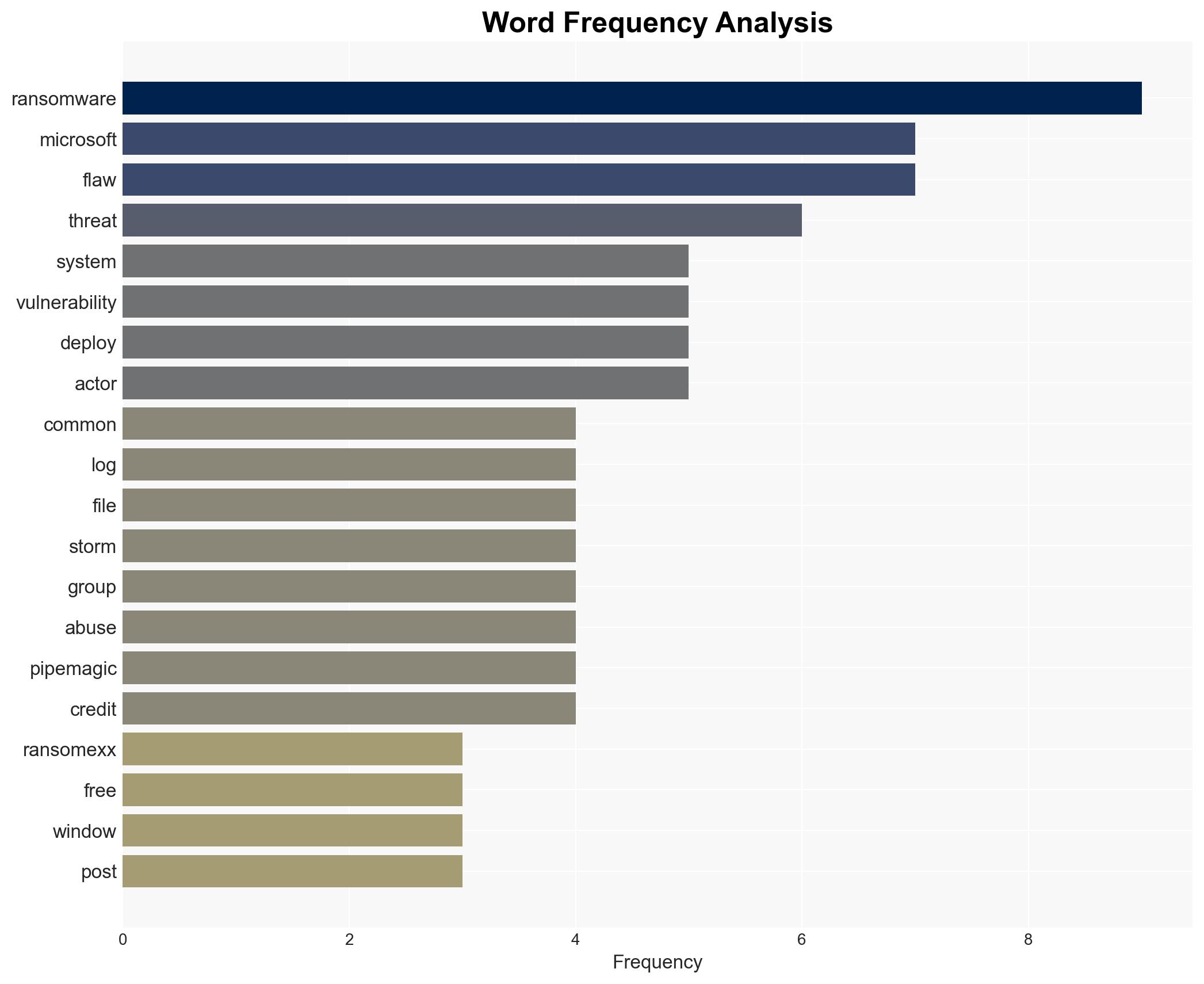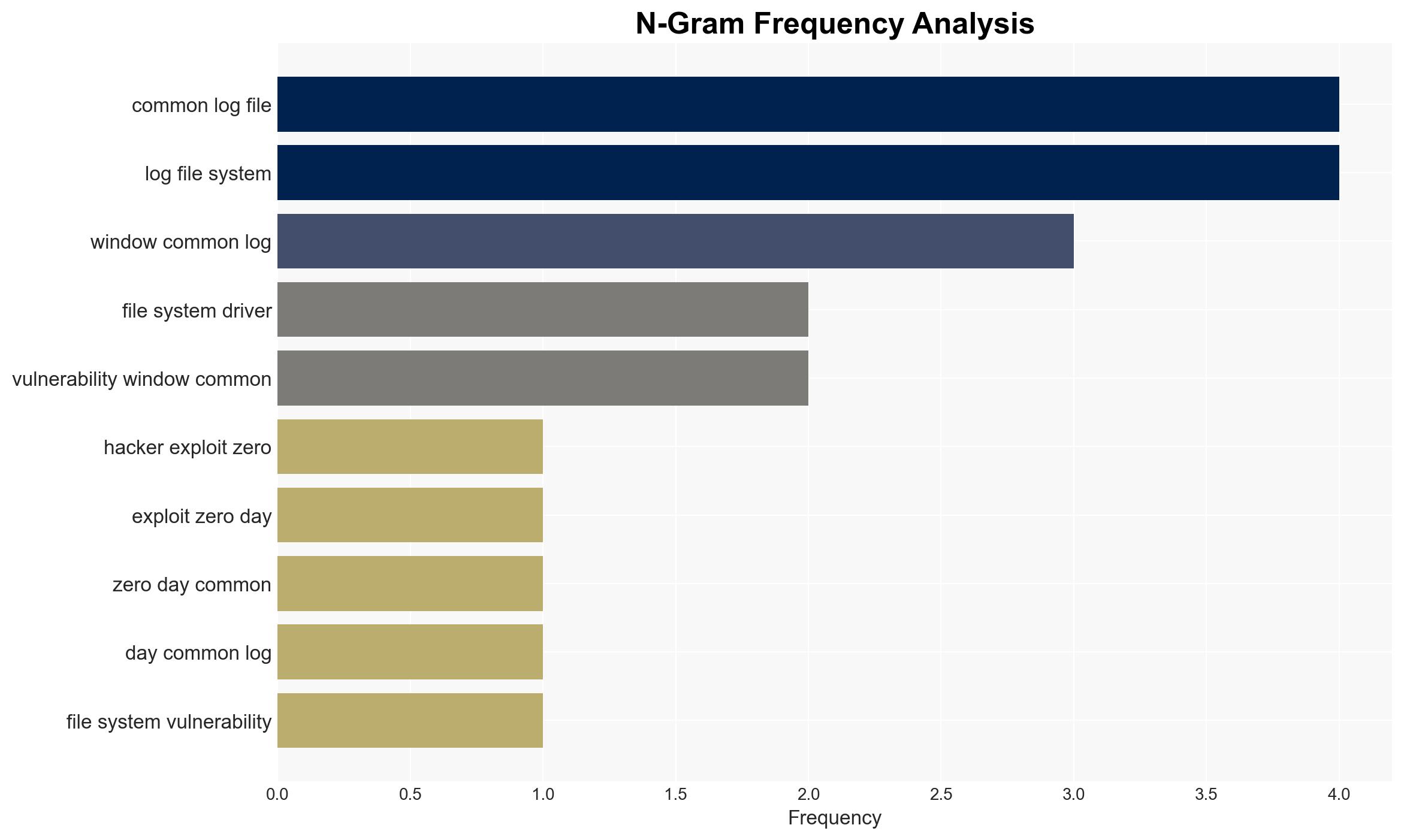Hackers exploit zero-day Common Log File System vulnerability to plant ransomware – TechRadar
Published on: 2025-04-09
Intelligence Report: Hackers exploit zero-day Common Log File System vulnerability to plant ransomware – TechRadar
1. BLUF (Bottom Line Up Front)
A zero-day vulnerability in the Common Log File System (CLFS) has been exploited by hackers to deploy ransomware, specifically the RansomEXX variant, via the PipeMagic tool. The threat actors, known as Storm, have targeted organizations in the United States, Venezuela, Spain, and Saudi Arabia, primarily in the finance and retail sectors. Immediate patching of the vulnerability is recommended to prevent further exploitation.
2. Detailed Analysis
The following structured analytic techniques have been applied for this analysis:
General Analysis
The exploitation of the zero-day vulnerability in the Windows Common Log File System driver allows threat actors to elevate privileges locally, facilitating the deployment of ransomware. The Storm group has utilized this flaw to install the PipeMagic backdoor, leading to the deployment of the RansomEXX ransomware. The vulnerability, tracked as CVE, has been actively exploited, underscoring the need for immediate defensive measures.
3. Implications and Strategic Risks
The exploitation of this vulnerability poses significant risks to national security and economic interests, particularly in the finance and retail sectors. The ability of threat actors to gain privileged access post-compromise increases the potential for widespread ransomware deployment, potentially disrupting critical infrastructure and financial systems. Regional stability may also be affected as targeted attacks could lead to economic destabilization.
4. Recommendations and Outlook
Recommendations:
- Immediate deployment of the security patch released by Microsoft to mitigate the vulnerability.
- Enhance monitoring and incident response capabilities to detect and respond to potential exploitation attempts.
- Conduct regular security audits and vulnerability assessments to identify and address potential weaknesses.
Outlook:
In the best-case scenario, rapid patch deployment and enhanced security measures will prevent further exploitation. In the worst-case scenario, continued exploitation could lead to significant data breaches and financial losses. The most likely outcome involves a moderate level of continued exploitation until widespread patching is achieved.
5. Key Individuals and Entities
The report mentions Microsoft, Storm, and Sead as significant entities involved in the context of the vulnerability and its exploitation.





